In my previous article, I delved into Alsace and its renowned wines. Today, my focus shifts to Bordeaux and its extraordinary wine productions. A defining quote capturing Bordeaux’s philosophy reads:
A vineyard without a past is a vineyard without a future
Bordeaux is famed for its prestigious red wines, crafted through the intricate blending of Merlot and Cabernet Sauvignon, known as the Bordeaux blend. Alongside these iconic reds, stand out the sweet wines, derived from overripe clusters of Sémillon, complemented by hints of Sauvignon Blanc and Muscadelle, often affected by the Botrytis cinerea fungus.
Index:
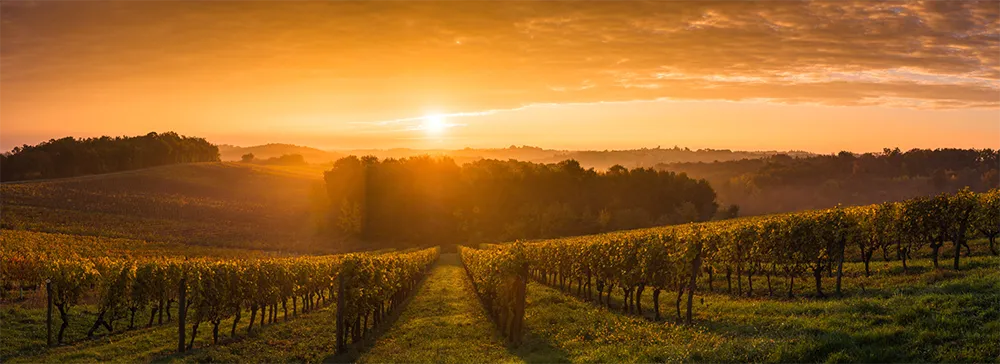
Climate and Terrain
Bordeaux’s viticultural territory is bordered by the Gironde estuary and the Garonne and Dordogne rivers, dividing it into two distinctive regions:
- western part: nestled between the oceanic coastline and the vast estuary
- eastern part: characterized by hills rarely exceeding 100 meters above sea level, renowned for producing wines like Pomerol and Saint-Émilion
Climate
Bordeaux enjoys a temperate oceanic climate, moderated by the beneficial effects of the Gulf Stream.
Additionally, the pine forest lining the oceanic coastline provides protection from western winds.
However, vineyards face risks from:
- May frosts
- intense August storms
Nevertheless, the peak sunlight exposure in July and August fosters the perfect phenolic and aromatic ripening of grape clusters.
Soil
Bordeaux’s soil originates from the Tertiary period, around fifty million years ago.
To the north, left of the Gironde and Médoc, the predominant soils are limestone and marl-limestone.
To the left of the Garonne, in Graves, sandy silica, limestone, and clay soils, with a significant presence of gravel, are suitable for Merlot and Sémillon.
Varietals
Bordeaux’s grape legislation encompasses six black grape varieties and nine white grape varieties.
Black grape varieties include:
- Merlot: Bordeaux’s iconic grape, representing over 60% of planted vineyards. Flourishing in clayey soils, it offers splendid notes of small red fruits, with an elegant hint of freshly cut grass, softened by violet shades and mineral undertones
- Cabernet Sauvignon: Emblematic of Médoc, this grape is greatly influenced by soil composition, preferring the gravelly soils of Médoc over Pomerol’s clayey terrain
- Cabernet Franc: Known as Bouchet in Saint-Émilion, this grape represents 20% of cultivated grapes
- Carmenère: Laden with history, wines produced from this grape boast intense and deep colors, beautiful fruity complexity, and a body sculpted by austere yet elegant tannins
- Petit Verdot: Preferring rather humid soils like those in Médoc.
- Malbec or Cot
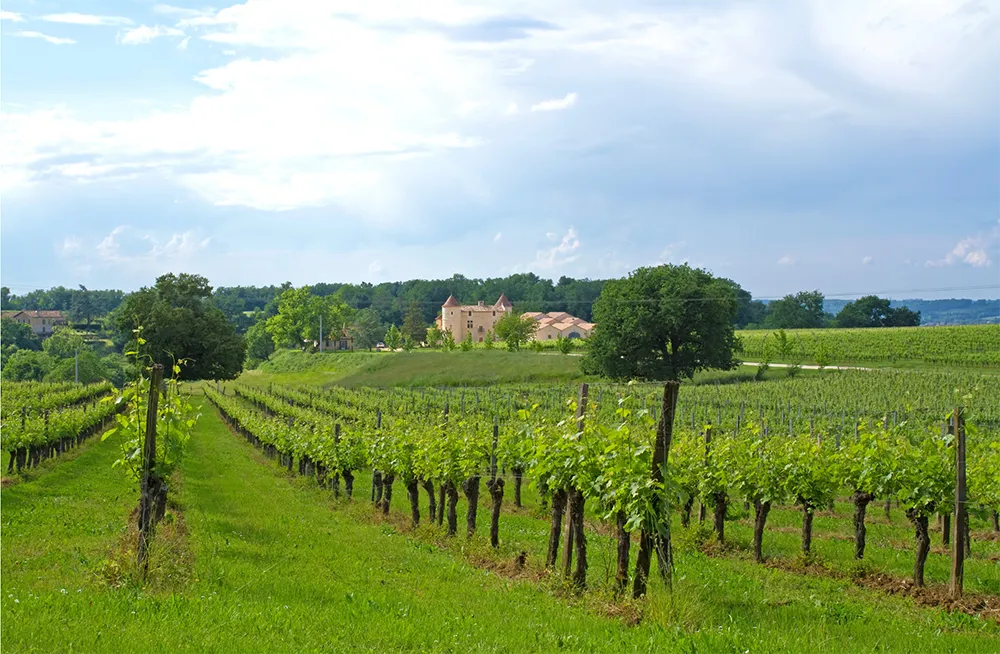
White grape varieties include:
- Sémillon: Unrivaled in both quality and quantity, representing 55% of white grapes. It yields splendid sweet wines, especially in Sauternes and Barsac
- Sauvignon blanc: The perfect complement to Sémillon in producing dry or sweet white wines from overripe grapes. This grape covers about 33% of vineyard surface
- Muscadelle: Precious for Bordeaux wines, the 1000 hectares cultivated with Muscadelle are used in the production of sweet wines like AOC Sauternes and AOC Barsac
- Ugni Blanc: Also known as Trebbiano, it’s the most cultivated grape in AOC Bordeaux. In Charente, it’s used for wines destined for distillation and Cognac production
- Colombard: Representing 2% of white grape varieties
- Merlot Blanc
- Ondenc
- Chenin blanc
- Mauzac
Bordeaux and Its Designations
In Bordeaux, unlike other regions, the system of designations has even set legal precedents.
The Universal Exposition of Paris in 1855 provided an opportunity to establish a precise classification of Bordeaux. The aim was to showcase the experience and professionalism of 150 years of Girondin territory.
Some Château are excellent ambassadors of Bordeaux, such as Château Margaux, Château Latour, Château Haut-Brion, Château Lafite-Rothschild, and Château d’Yquem.
Terms subject to quality wine regulation include:
- Premier Cru
- Grand Cru
- Cru Classé
- Cru
- Clos
- Camp
- Haut
The first three refer to a private classification from 1855 valid for Médoc, Graves, and Sauternais wines. Other Bordeaux territories established a classification many years later.
The Bordeaux wine classification consists of six families:
- Bordeaux and Bordeaux Supérieur
- Côte
- Médoc and Graves
- World of Merlot
- Dry white wines
- Sweet white wines
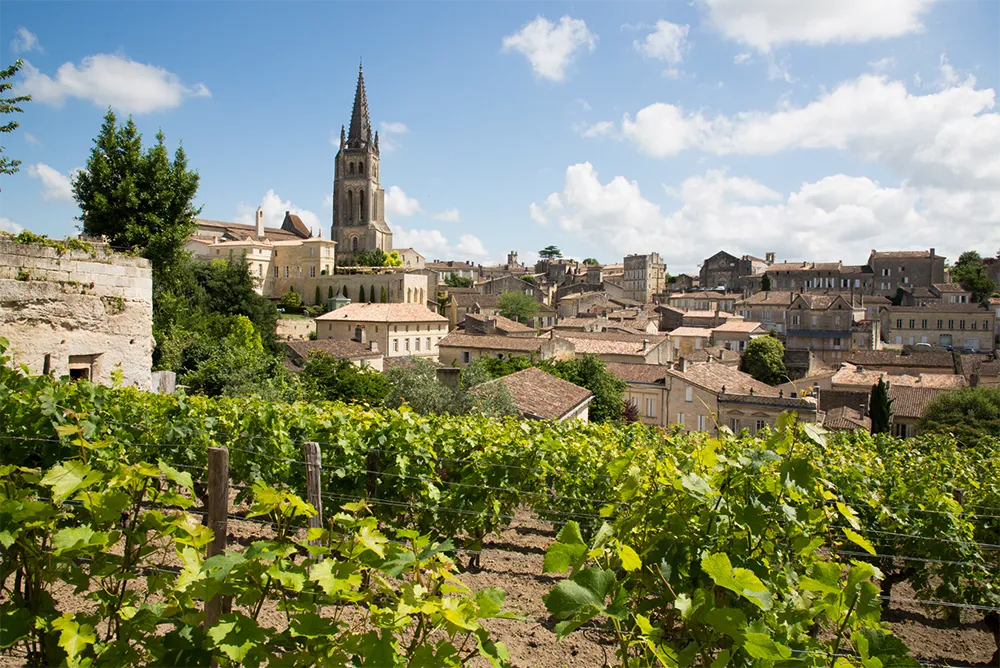
Some Wine Regions
Bordeaux boasts a rich territorial variety, resulting in a wide range of wines summarized into six major families.
Médoc
The name “Médoc” derives from the Latin term mediae aquae.
This region is globally renowned for producing exceptional red wines.
Médoc is almost entirely surrounded by water, as it stretches along a 120-kilometer peninsula from the northwest of Bordeaux, starting from the Blanquefort stream, to the Atlantic Ocean and the Gironde estuary.
Vineyards cover an area extending 70 kilometers in length and 2 to 5 kilometers in width, ending in the north at the village of Vensac.
The Médoc and Haut-Médoc appellations represent a diverse productive area: Haut-Médoc begins north of Bordeaux and ends at Saint-Seurin-de-Cadourne, while Médoc extends into the northern part of the Gironde cone.
Haut-Médoc comprises six excellent communal appellations:
- Margaux
- Listrac-en-Médoc
- Moulis-en-Médoc
- Saint-Juline
- Pauillac
- Saint-Estèphe
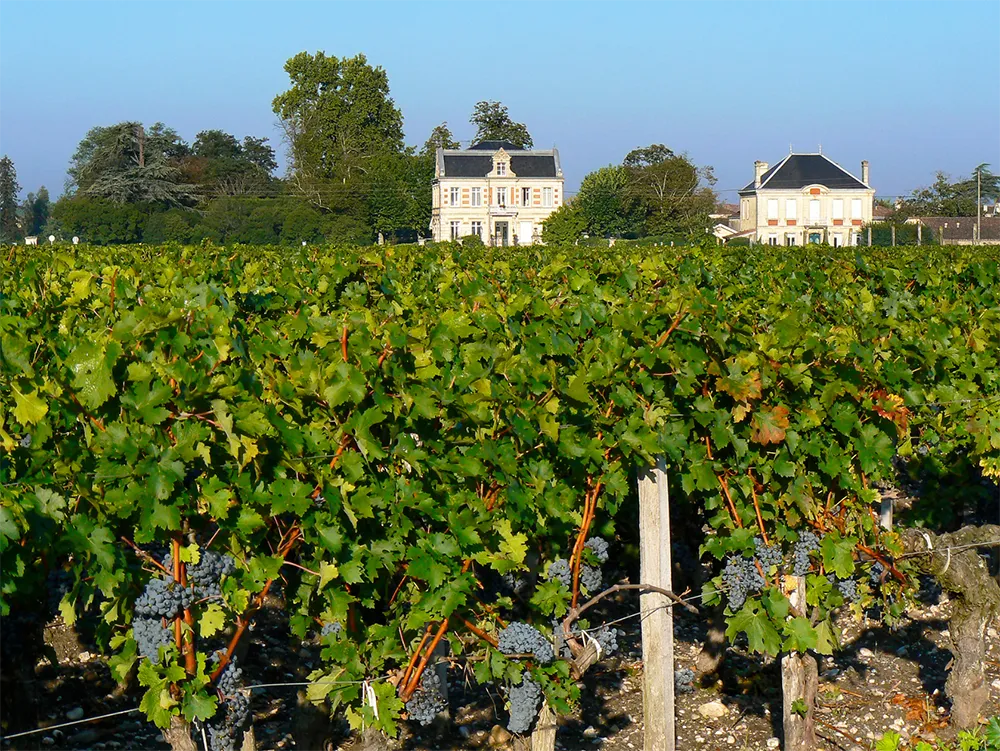
Graves
Graves vineyards boast an ancient lineage associated with Claret, a light red wine cherished in England since medieval times.
The vineyards of Graves derive their name from the gravelly soil composition, known as “grave.” These soils result from alluvial deposits of pebbles and stones surfacing.
Graves appellations include:
- Graves
- Graves Supérieures
- Pessac-Léognan
- Sauternes
- Barsac
- Cérons
The Graves Supérieures appellation designates semi-sweet and sweet white wines, primarily made from Sémillon grapes. These wines are perfect as an aperitif and pair wonderfully with a tarte tatin. Pessac-Léognan wines are of exceptional quality, crafted from Cabernet Sauvignon and Merlot grapes. They boast deep, dark hues with violet reflections, aromas of ripe red fruits, and barrel aging adds hints of cocoa, coffee, and toasted almonds. They pair ideally with game dishes or wild meats.
Sweet white wines from the left bank of the Garonne River are known as Vin blanc liquoreux according to French law. Less sweet wines are labeled as Moelleux.
The pinnacle of Vin blanc liquoreux excellence includes AOC Sauternes, Barsac, and Cérons, which yield very low yields – 25 hl/ha for Sauternes and 40 hl/ha for Cérons wines.
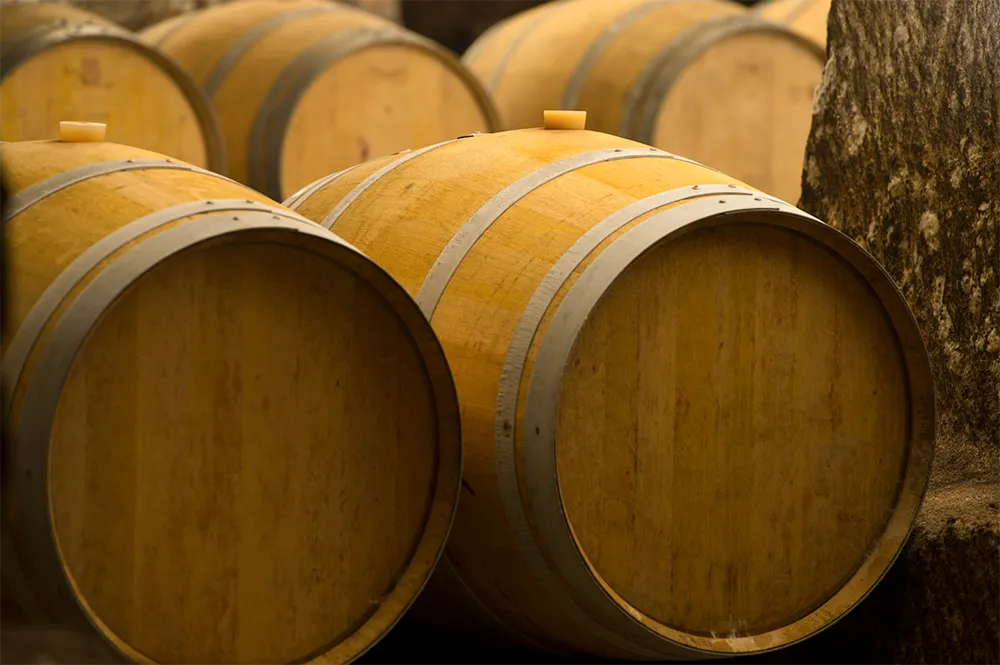
Saint-Émilion
Saint-Émilion is the oldest wine-growing area in Bordeaux.
The climate is temperate oceanic and humid, with mild temperatures – around 20 °C – in July and August, limited sunlight exposure, and low yields. Limited sunlight exposure slows grape maturation.
Merlot is the most widely used grape in Saint-Émilion, accounting for 55-65% of the blend, followed by Bouchet (Cabernet Franc) at 30-35%, Cabernet Sauvignon at 5-15%, and Noir de Pressac (Malbec). Saint-Émilion has a unique classification system.
Indeed, there are only two categories of wines:
- Premier Cru Classé – divided into classes A and B: Premier Cru Classé class A includes Château Cheval Blanc and Château Ausone, while class B comprises 13 Château including Château Angelus, Château Pavie, and Clos Fourtet
- Grand Cru Classé
- In the Saint-Émilion territory, two important AOCs are recognized: Saint-Émilion: representing a sensory profile of high-quality wines. These wines display ruby-red hues in youth, garnet after 3-5 years, with notes of wild strawberries and violets, accompanied by hints of sweet spices, cocoa, and smoke
- Saint-Émilion Grand Cru Classé: comprising 47 Grand Cru Classé, produced from grapes harvested in limestone plateau vineyards, i.e., high-altitude terrains surrounding the city and clay-limestone hillsides
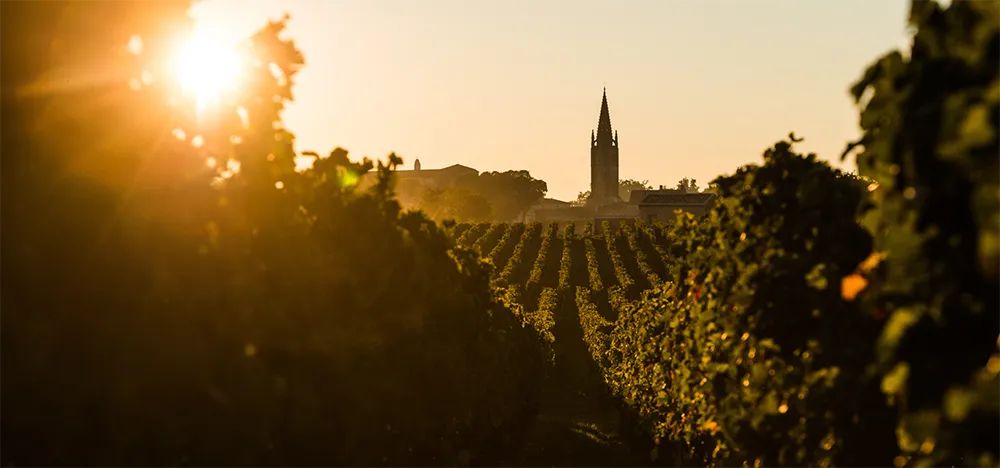
Pomerol
The landscape of Pomerol is characterized by a gentle plateau reaching 40 meters above sea level.
The Pomerol AOC covers 800 hectares of highly heterogeneous terrain, featuring clay, sand, and gravel. The vineyard plots are fragmented among numerous small producers.
Generally, the blend used for these wines consists of 80% Merlot, 10% Cabernet Franc, 8% Cabernet Sauvignon, and 2% Malbec. These wines exhibit intense ruby or garnet hues, complex aromas of violets, with undertones of black truffle, leather, licorice, and dried plum. They pair perfectly with game dishes and aged cheeses.
In the Lalande-de-Pomerol AOC, Merlot represents 75% of the blend, Cabernet Franc is preferred over Cabernet Sauvignon, with a small percentage of Malbec.
Last word
Now, when you hear about Bordeaux wines, you have starting points to deepen your wine knowledge.How well do you know wine terminology? Test yourself with the small wine glossary!
Amo la buona cucina e le tradizioni enogastronomiche italiane, per me vino e dessert non sono solo un contorno ma la parte più interessante del buon vivere.













